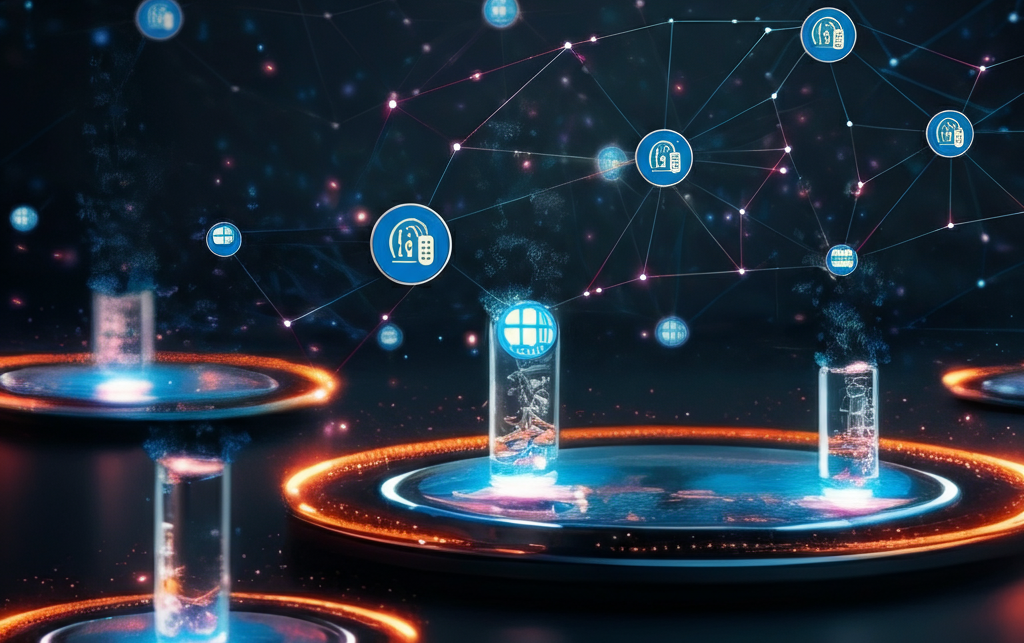Cloud computing has revolutionized how applications and data are managed, offering centralized solutions that eliminate the need for in-house data centers. However, when data must travel long distances between users and centralized servers, latency can slow down processing. This is where edge computing steps in.
Edge computing is transforming the way we process and interact with data in today’s hyper-connected world. Unlike traditional models that rely on centralized servers, edge computing shifts data processing and storage closer to its source. This decentralized approach reduces latency, optimizes bandwidth usage, and significantly enhances overall efficiency.
The Connected Edge
Building on this innovation is the concept of the connected edge—an interconnected network of edge devices working together to process data faster and enable smarter decision-making. Think of it as a coordinated system where individual components (edge devices) operate seamlessly, much like cogs in a finely tuned machine. By leveraging this interconnectivity, the connected edge offers greater computational power and faster responses compared to traditional centralized systems.
For this system to function effectively, it requires three core elements: edge devices, edge computing, and edge analytics. In this article, we’ll focus on these key components to better understand the role of edge computing.
Core Components of Edge Computing
Let’s explore the essential elements that define edge computing.
- Edge Devices: Edge devices include physical tools such as sensors, cameras, smartphones, and IoT (Internet of Things) equipment. These devices collect and generate data at the network’s edge, acting as the starting point for the data processing journey.
- Edge Servers: Edge servers are localized computing units designed to filter, aggregate, and analyze data near its source. By processing information locally, they reduce latency and alleviate the bandwidth demands of transmitting data to centralized servers.
- Edge Analytics: Edge analytics involves real-time analysis of data at the edge using advanced software and algorithms. This enables organizations to derive instant insights and make swift, informed decisions in response to dynamic conditions.
- Edge Gateways: Acting as secure intermediaries, edge gateways enable seamless communication between edge devices and centralized systems, such as cloud platforms or data centers. These gateways ensure reliable and secure data transmission.
By bringing intelligence closer to the source of data, edge computing is setting the stage for a smarter, faster, and more efficient digital future.
Establishing an Edge Computing Environment
Setting up an edge computing infrastructure involves a series of strategic steps to ensure efficiency and reliability:
- Identify the Use Case: Pinpoint the specific problem or opportunity edge computing will address, such as real-time data analysis, latency reduction, or improved application performance.
- Assess Hardware Needs: Determine the number and type of edge devices required, including their processing power, storage, and unique features tailored to your use case.
- Select Optimal Locations: Ensure edge devices are placed close to where data is generated or consumed. Factors like accessibility, power supply, and environmental conditions should guide placement.
- Establish Reliable Connectivity: Use secure, high-speed connections—via Wi-Fi, cellular networks, or dedicated infrastructure—to enable seamless communication between edge devices and centralized systems.
- Implement Robust Security Measures: Protect sensitive data processed at the edge with encryption, access controls, and consistent monitoring to mitigate vulnerabilities.
- Integrate with Existing Systems: Ensure your edge computing infrastructure integrates smoothly with your current IT systems for streamlined data transfer and operational efficiency.
- Leverage Edge Analytics: Harness real-time data analysis to enable faster decision-making and actionable insights directly at the edge.
- Monitor and Manage Devices: Use centralized tools to track device performance, apply updates, and troubleshoot issues, ensuring all components run optimally.
- Integrate AI and Machine Learning: Combine edge computing with AI and ML technologies to analyze large datasets in real time, enabling smarter decisions and greater automation.
The Benefits of Edge Computing
Edge computing offers transformative benefits across industries:
- Real-Time Data Processing: It handles large volumes of data instantly, enabling quicker decision-making in industries like healthcare, manufacturing, and transportation.
- Reduced Latency and Improved Performance: By processing data locally, edge computing minimizes delays, ensuring faster responses and smoother operations.
- Enhanced Security and Privacy: Data processed closer to its source reduces vulnerabilities associated with transmitting sensitive information across networks, while allowing for better compliance with privacy regulations.
- Empowering AI and Automation: Edge computing supports the deployment of AI algorithms locally, enabling real-time insights and greater automation.
- Improved User Experience: Applications like virtual reality, gaming, and autonomous vehicles benefit from reduced latency and faster, more responsive systems.
- Scalability and Flexibility: Unlike centralized cloud computing, edge computing supports distributed processing across multiple locations, making it easier to scale and adapt to changing demands.
- Cost Efficiency: Localized processing reduces bandwidth usage and reliance on expensive server infrastructure, cutting costs while enhancing performance.
Challenges of Edge Computing
While edge computing offers numerous advantages, it also comes with its own set of challenges. Let’s explore the key hurdles organizations face when adopting this technology.
- Data Security: Processing and storing data across decentralized locations comes with security risks. Edge devices need to be secured and regularly updated to reduce vulnerabilities. As data moves between edge devices and the cloud, the risk of interception increases. Strong security measures are key to protecting sensitive information at every step.
- Network Reliability: Edge computing depends on stable network connectivity to transfer data between devices and the cloud. Without a reliable network, performance can suffer, and outages can disrupt operations. Organizations must invest in resilient networks to ensure smooth communication.
- Management Complexity: Managing a decentralized network of edge devices can be difficult, especially when spread across multiple locations. It requires tools and processes to handle updates, monitor performance, and fix issues. Without a clear strategy, maintaining edge systems can quickly become overwhelming.
- Data Integration: Edge computing generates large amounts of data that must integrate with an organization’s existing systems. Ensuring compatibility with current IT can be challenging, often requiring businesses to invest in new tools to manage and process the data efficiently.
- Increased Security Risks: As more devices connect to networks, the risk of cyberattacks and data breaches increases. Without proper safeguards, sensitive information is at risk. Organizations must use strong security protocols to protect data and guard against new threats. Proactive measures are key to staying ahead of vulnerabilities.
Edge computing is a powerful innovation, but navigating its challenges requires careful planning, investment in infrastructure, and a strong commitment to security and management practices. Addressing these hurdles is key to unlocking its full potential.
Key Use Cases for Edge Computing
Edge computing is revolutionizing industries through innovative applications:
- Internet of Things (IoT): With the proliferation of IoT devices, edge computing enables real-time analysis and decision-making while reducing cloud dependency.
- Retail: Real-time data from sensors and cameras optimizes inventory management, personalizes customer experiences, and streamlines supply chains.
- Manufacturing: Smart factories leverage edge computing for real-time monitoring, predictive maintenance, and improved productivity.
- Transportation: Connected vehicles communicate in real time with each other and infrastructure, enhancing safety, traffic management, and navigation.
- Healthcare: Edge computing supports remote monitoring, telemedicine, and real-time response to emergencies, improving access and outcomes for patients.
The Role of AI in Edge Computing
Integrating AI into edge computing amplifies its potential. AI systems can analyze data locally for predictive maintenance, optimizing production schedules, and improving decision-making. For example, AI-powered predictive maintenance identifies equipment issues before they occur, reducing downtime and operational costs. It is noteworthy that AI can analyze and process data in real-time, which makes it a valuable addition to edge computing.
AI also plays a crucial role in edge computing for autonomous vehicles and drones. These systems require continuous processing of large amounts of data in real-time to make decisions and take actions quickly. Edge computing enables this by providing local processing power while AI algorithms aid in decision-making based on sensor data collected from the environment.
Conclusion
Edge computing is transforming how we interact with data by moving processing closer to its source. With benefits like real-time insights, enhanced security, and reduced latency, it’s driving innovation in industries ranging from healthcare to transportation. When combined with AI, edge computing unlocks even greater potential, enabling smarter decisions and more efficient systems.
As the connected edge continues to evolve, its influence will extend further, reshaping industries and redefining what’s possible in technology. Edge computing isn’t just the future—it’s the next step in creating a smarter, faster, and more connected world.





